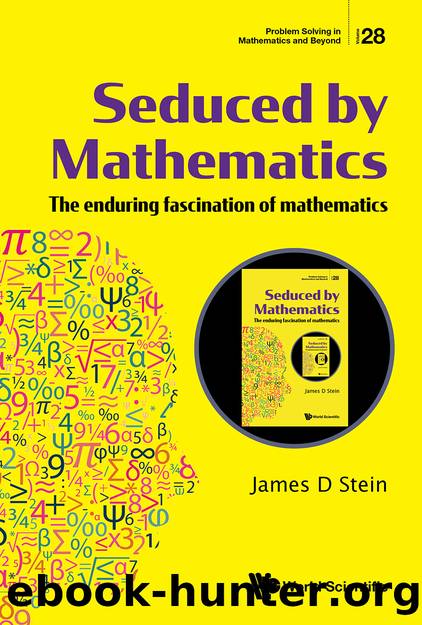Seduced by Mathematics: The enduring fascination of mathematics by James D Stein

Author:James D Stein
Language: eng
Format: epub
ISBN: 9789811255489
Publisher: World Scientific Publishing Co. Pte. Ltd
Published: 2023-02-15T00:00:00+00:00
The Work of Man
Leopold Kronecker was a 19th-century German mathematician who famously declared, âThe integers are the work of God, all else is the work of Manâ [3]. So how do we get to a point where we can actually talk about something called âthe square root of minus 1â?
Yes, they knew the rules for computing with expressions of the form a + bi in the 16th century â but how do we know weâre actually talking about something? Mathematics had faced this same dilemma before â first with zero, and then with negative numbers â but you can put real-world interpretations on both of them. In fact, money is a really good model for these concepts, as zero corresponds to having no money, and negative numbers correspond to being in debt.
And thatâs probably akin to what Descartes had in mind. But thereâs a more serious issue than just âmathematical fictionâ associated with the square root of â1. What if itâs more than âmathematical fictionâ â itâs total fiction in the sense that no such mathematical entity exists?
One of my former professors encountered this particular stumbling block. Without going into gory details, we can think of the real numbers as a number system of dimension one. It turns out that the complex numbers are a similar system of dimension two. In the 19th century, mathematicians came up with quaternions, which were a similar system of dimension four, and Cayley numbers, which were a system of dimension eight.
As you can probably guess, the next number system up the line would be of dimension sixteen, and my professor spent some time working out theorems that would be true of such a system. Just before he was ready to submit his paper, another mathematician managed to demonstrate that there were no such systems of dimension sixteen â or higher.
Hereâs how mathematicians got around that problem for the complex numbers. They defined a system of ordered pairs (a, b) of real numbers which obeyed the following rules of addition and multiplication.
Download
This site does not store any files on its server. We only index and link to content provided by other sites. Please contact the content providers to delete copyright contents if any and email us, we'll remove relevant links or contents immediately.
The Infinite Retina by Robert Scoble Irena Cronin(6216)
Harry Potter and the Cursed Child: The Journey by Harry Potter Theatrical Productions(4467)
The Sports Rules Book by Human Kinetics(4343)
Molly's Game: From Hollywood's Elite to Wall Street's Billionaire Boys Club, My High-Stakes Adventure in the World of Underground Poker by Molly Bloom(3510)
A Knight of the Seven Kingdoms by George R R Martin(3222)
Quidditch Through the Ages by J.K. Rowling(3084)
How To by Randall Munroe(3074)
Flowers For Algernon by Daniel Keyes(3050)
Quidditch Through the Ages by J K Rowling & Kennilworthy Whisp(2948)
Stacked Decks by The Rotenberg Collection(2843)
Quidditch Through the Ages by Kennilworthy Whisp by J.K. Rowling(2831)
Quidditch through the Ages by J. K. Rowling(2781)
Quidditch Through The Ages by J. K. Rowling(2745)
776 Stupidest Things Ever Said by Ross Petras(2741)
Ready Player One: A Novel by Ernest Cline(2674)
What If?: Serious Scientific Answers to Absurd Hypothetical Questions by Randall Munroe(2670)
Beautiful Oblivion by Jamie McGuire(2585)
The Book of Questions: Revised and Updated by Gregory Stock Ph.d(2542)
Champions of Illusion by Susana Martinez-Conde & Stephen Macknik(2436)
